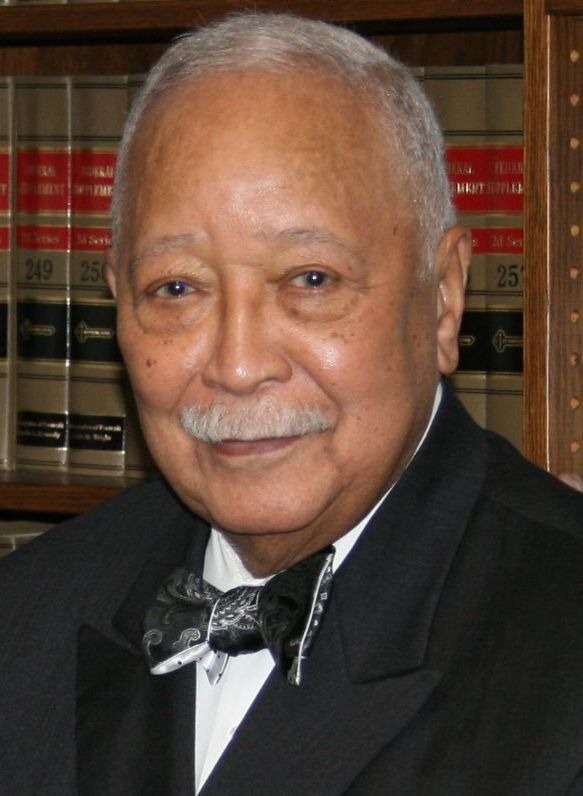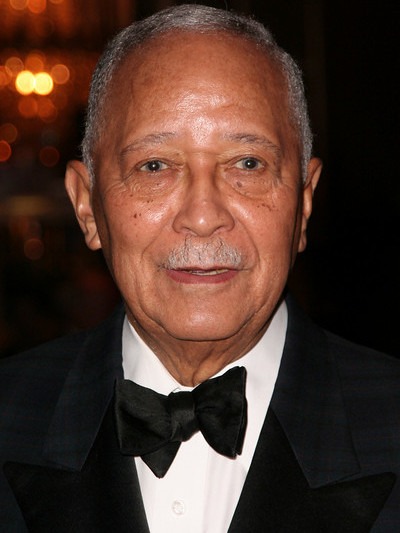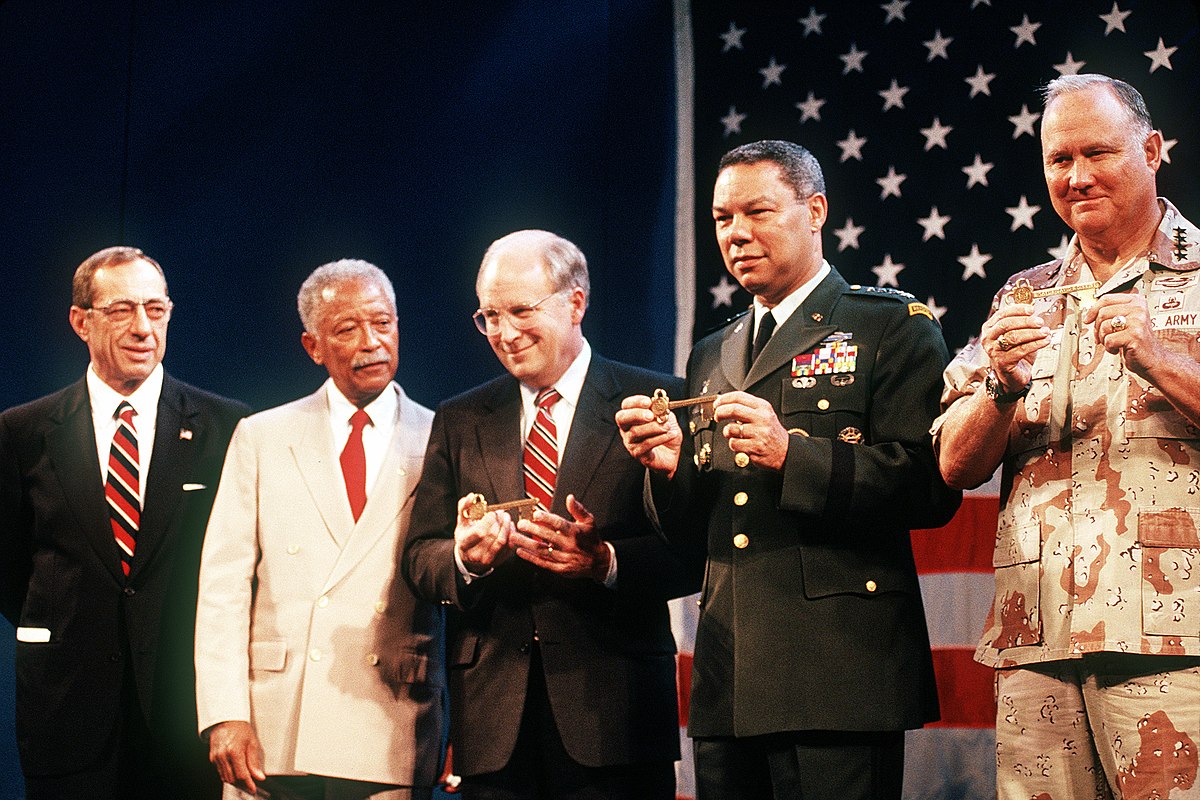In the early 1990s, the United States faced a period of intense racial tensions, marked by significant social and political challenges. Amidst this turbulent era, David Dinkins, as the first African American Mayor of New York City, played a crucial role. This article delves into Dinkins’ approach to addressing these tensions and his legacy in fostering racial harmony.
The Early 1990s: Setting the Scene
The 1990s marked a pivotal era in American history, particularly in the context of racial relations. This period was not only transformative but also tumultuous, setting the stage for significant changes in the socio-political landscape of the United States.
The Racial Climate in America
The decade was ushered in on the heels of the late 1980s, a period marred by racial tensions and civil unrest. It was a time when the wounds of racial injustice and inequality were far from healed, with incidents across the nation underscoring the persistent divide.
- High-Profile Incidents and Their Impact: The 1990s witnessed several incidents that became national symbols of racial conflict. These events often led to widespread public outcry, protests, and in some cases, riots. They underscored not only the prevailing racial tensions but also the profound challenges in addressing systemic racism and inequality. Each incident served as a stark reminder of the deep-seated issues affecting minority communities and ignited debates over civil rights, judicial fairness, and law enforcement practices.
- Media and Public Perception: The role of media in shaping public perception of race relations during this period was significant. News coverage of racial incidents often brought these issues into the living rooms of Americans, forcing a national conversation. However, the media’s portrayal of these events and their protagonists also played a part in shaping narratives, sometimes exacerbating tensions and at other times fostering understanding.
- Government Response and Policy Implications: The federal and state governments’ responses to these incidents were closely scrutinized. Policies addressing racial disparities, law enforcement reforms, and community relations were often at the forefront of political discourse. The effectiveness and sincerity of these responses were a matter of public debate, reflecting the nation’s struggle to come to terms with its racial history and present.
New York City’s Unique Challenges
New York City, often seen as a microcosm of America, presented its own unique set of challenges in this era. As a hub of diverse cultures and ethnicities, the city’s experiences with racial issues were both reflective of the broader national context and distinct in their complexity.
- Diversity and Its Discontents: The city’s diversity, while a source of cultural richness, also led to unique tensions. Neighborhoods were often segregated along racial and ethnic lines, leading to isolated communities with little interaction or understanding of each other. This segregation sometimes resulted in conflicts, misunderstandings, and stereotypes, further entrenching racial divisions.
- Economic Disparity and Racial Divisions: Economic disparity in New York City was closely intertwined with racial lines. Minority communities often faced higher levels of poverty, unemployment, and limited access to quality education and healthcare. These economic challenges exacerbated racial tensions, as competition for resources, housing, and employment sometimes pitted communities against each other.
- Policing and Community Relations: Perhaps one of the most critical issues in New York City during this period was the relationship between the police and the communities they served. Incidents of police brutality, racial profiling, and the disproportionate targeting of minority communities were significant concerns. These issues not only fueled mistrust and resentment towards law enforcement but also highlighted the broader challenges of systemic racism within the city’s institutions.
David Dinkins: A Trailblazer in Politics
David Dinkins’ tenure as the Mayor of New York City in the early 1990s was more than a political milestone; it was a symbol of progress in a city and nation grappling with racial tensions. His rise to political prominence and his vision for the city offer insights into a transformative period in New York’s history.
Dinkins’ Rise to Political Prominence
Early Life and Formative Years: Born in 1927 in Trenton, New Jersey, David Dinkins grew up during a time of significant racial segregation in America. His early experiences with racial discrimination shaped his perspectives and fueled his passion for social justice. Dinkins’ journey from his early life through his education, particularly at Howard University and Brooklyn Law School, laid the foundation for his future in public service.
Entry into Politics: Dinkins’ foray into politics was marked by his deep commitment to civil rights and community service. His early political career included roles in the New York State Assembly and as Manhattan Borough President. These positions allowed him to develop a keen understanding of the city’s diverse population and its complex socio-political dynamics.
Historical Significance of His Election: Dinkins’ election as the first African American Mayor of New York City in 1989 was a historic moment. It represented a significant breakthrough in the city’s racial politics and was seen as a beacon of hope for addressing longstanding issues of racial inequality. His election was not just a personal achievement but a milestone for African Americans and other minority communities in New York City.
The Vision of a ‘Gorgeous Mosaic’
Conceptualizing the ‘Gorgeous Mosaic’: Dinkins often described New York City as a “gorgeous mosaic” of diverse people, cultures, and ideas. This vision was at the heart of his approach to governance. Unlike the concept of a melting pot, which implies assimilation, Dinkins’ mosaic metaphor celebrated diversity, suggesting that each unique piece contributed to the overall beauty of the whole.
Promoting Diversity and Inclusivity: Dinkins’ policies and initiatives were grounded in this philosophy. He endeavored to create an inclusive environment where all communities could coexist and thrive. This vision was evident in his approach to appointments, where he ensured representation from various communities, and in his efforts to address issues disproportionately affecting minority groups.
Fostering Coexistence and Mutual Respect: Recognizing the challenges posed by the city’s diversity, Dinkins sought to foster a culture of mutual respect and understanding. He advocated for dialogue and collaboration among different groups, emphasizing the importance of recognizing and celebrating each community’s unique contributions to the city. His leadership during times of racial strife was focused on calming tensions and promoting peace and reconciliation.
Key Initiatives and Policies
Under Mayor David Dinkins, New York City witnessed a series of reforms and initiatives aimed at addressing some of the most pressing issues of the time, particularly concerning police reform, youth and education, and economic equality.
Police Reform and Community Relations
Enhancing Police Accountability: Recognizing the critical need to rebuild trust between the police and the communities they served, Dinkins championed measures to enhance accountability within the New York City Police Department (NYPD). This involved advocating for more stringent internal review processes and supporting external oversight mechanisms to ensure that instances of misconduct, especially those with racial undertones, were effectively addressed.
Community Policing Initiatives: Dinkins was a proponent of community policing, a strategy aimed at fostering a partnership between the police force and the community. This approach was rooted in the belief that effective policing required mutual respect and cooperation. Initiatives under this model included assigning officers to specific neighborhoods to build familiarity and trust, and involving community members in discussions about safety and policing strategies.
Training and Sensitivity Programs: Understanding the importance of cultural sensitivity in policing diverse communities, Dinkins pushed for enhanced training for officers. These programs were designed to educate law enforcement personnel on the cultural and social dynamics of the communities they served, aiming to reduce instances of racial profiling and excessive force.
Youth and Education Programs
Investment in Education: Dinkins was a strong advocate for education, viewing it as a fundamental tool for empowering youth, especially those from marginalized communities. His administration focused on increasing funding for public schools, improving infrastructure, and ensuring access to quality education for all children, regardless of their background.
After-School and Mentorship Programs: Recognizing the challenges faced by youth in underprivileged areas, Dinkins initiated several after-school and mentorship programs. These initiatives provided safe spaces for young people to engage in educational and recreational activities, receive tutoring and career guidance, and build positive relationships with mentors who could provide support and guidance.
Youth Development and Employment Opportunities: To address the issue of youth unemployment and its correlation with crime and poverty, Dinkins’ administration worked on creating job training and employment opportunities for young people. These programs aimed not only to provide immediate economic benefits but also to instill a sense of purpose and direction for the future.
Economic Policies for Greater Equality
Addressing Economic Disparities: Dinkins was acutely aware of the economic disparities along racial lines in the city. His policies aimed at promoting economic equality included support for minority-owned businesses, investment in economically disadvantaged neighborhoods, and efforts to create more equitable access to city contracts and services.
Housing and Urban Development: A significant aspect of Dinkins’ economic policy was focused on affordable housing and urban development. Recognizing the link between housing and economic stability, his administration worked towards increasing the availability of affordable housing units and revitalizing neglected neighborhoods, thereby aiming to reduce the economic divide.
Tax Policies and Revenue Allocation: Dinkins’ approach to taxation and revenue allocation also reflected his commitment to economic equality. He advocated for tax policies that were fair and progressive, ensuring that essential services and programs, especially those benefiting low-income communities, received adequate funding.
Challenges and Controversies
David Dinkins’ tenure as Mayor was not without significant challenges and controversies, particularly in the realms of addressing high-profile racial incidents and navigating a landscape of political opposition and criticism.
Handling of High-Profile Racial Incidents
Crown Heights Riot: The Crown Heights riot of 1991 stands out as a defining moment in Dinkins’ mayoralty. This multi-day racial conflict in Brooklyn became a focal point for criticism of Dinkins’ leadership. Questions were raised about the adequacy and timeliness of his response, with some accusing him of being overly cautious due to the racial dynamics at play (the riot primarily involved African American and Jewish communities). Dinkins’ approach, which emphasized reconciliation and peacekeeping, was seen by some as ineffective in quelling the immediate violence.
Balancing Act in Crisis Management: Dinkins faced the complex task of managing these incidents while trying to maintain peace and order. His efforts to balance law enforcement with community sensitivity were often scrutinized. Critics argued that his attempts at maintaining neutrality sometimes hindered decisive action, while supporters viewed his approach as a necessary stance to prevent further escalation of tensions.
Long-term Impact and Learning: The handling of such incidents had a lasting impact on Dinkins’ administration. These events served as learning experiences, both for Dinkins and the city, highlighting the need for more effective strategies in crisis management and community engagement during racial conflicts.
Political Opposition and Criticism
Challenges in a Racially Charged Environment: Dinkins governed during a time of significant racial polarization in New York City. His policies and leadership were often viewed through the lens of race, both by supporters and detractors. This environment created a backdrop of constant scrutiny and opposition, making the implementation of his agenda challenging.
Criticism of Policies and Leadership Style: Dinkins faced criticism for various aspects of his leadership and policy decisions. Some opponents labeled his approach as too conciliatory or indecisive, particularly in dealing with crime and economic issues. His advocacy for minority communities and police reform was sometimes misconstrued as favoritism, contributing to political backlash.
Navigating a Divided Political Landscape: The political landscape of New York City during Dinkins’ tenure was marked by division and partisanship. Dinkins’ efforts to push through his reform agenda often met with resistance from various factions, including within the city council, the police department, and other city agencies. This opposition was not solely based on policy disagreements but was also fueled by the racial and social undercurrents of the time.
The Impact of Dinkins’ Leadership
David Dinkins’ tenure as the Mayor of New York City, albeit brief, left an indelible mark on the city’s history and contributed significantly to the national discourse on race and urban governance.
Long-term Effects on New York City
Shift in Racial Dynamics: Dinkins’ leadership played a crucial role in altering the racial dynamics of New York City. His tenure was marked by efforts to foster interracial understanding and cooperation. Although tensions did not disappear, there was a noticeable shift towards greater acknowledgement of racial issues and the need for inclusive policies. His approach laid the groundwork for subsequent administrations to continue addressing these challenges.
Improvement in Community Relations: Dinkins’ focus on community-based initiatives and inclusive governance helped improve relations between diverse communities in New York City. His policies, particularly in police reform and community engagement, although met with mixed reactions at the time, set a precedent for future efforts towards building a more cohesive and mutually respectful society.
Economic Equality Initiatives: The economic policies implemented during Dinkins’ mayoralty aimed at reducing disparities had varying degrees of success. While immediate transformations were limited, these initiatives sparked important conversations about economic inequality and the role of urban policies in addressing them. The emphasis on affordable housing, support for minority-owned businesses, and investment in underprivileged neighborhoods contributed to a gradual shift towards more equitable urban development.
Dinkins’ Role in National Racial Discourse
Contributions to National Conversations on Race: Dinkins’ tenure occurred during a pivotal time in America’s racial history. His leadership and the challenges he faced in New York City resonated across the country, contributing significantly to the national conversation on race relations, urban governance, and inclusivity. His approach to dealing with racial tensions and promoting a “gorgeous mosaic” of diversity was referenced and analyzed in various national forums and discussions.
Influence on Urban Policy and Leadership: Dinkins’ strategies and policies in dealing with urban issues and racial tensions provided a template for other cities grappling with similar challenges. His emphasis on community policing, economic inclusivity, and investment in education and youth programs influenced the approaches of other urban leaders and policymakers across the country.
Legacy in American Politics: David Dinkins’ legacy extends beyond his tenure as Mayor. As one of the first African American mayors of a major U.S. city, he broke significant racial barriers, inspiring a generation of political leaders and activists. His tenure highlighted both the complexities and the possibilities of urban governance in a racially diverse society. His efforts and the challenges he faced continue to be a point of reference in discussions about racial equity, urban policy, and political leadership in America.
Conclusion:
In retrospect, David Dinkins’ tenure as Mayor of New York City represents a pivotal moment in the city’s history, particularly in the realm of addressing racial tensions and fostering a more inclusive society. His leadership, marked by efforts to bridge racial divides and promote a vision of a “gorgeous mosaic,” set the stage for subsequent progress in a city deeply marked by racial and economic disparities. Though his tenure was not without its challenges and controversies, notably in handling high-profile racial incidents and navigating a politically and racially charged environment, his contributions towards initiating police reforms, supporting youth and education, and advocating for economic equality had a lasting impact. Dinkins’ approach to these complex issues laid a foundation for future administrations to build upon, shifting the dialogue and approach towards racial and economic issues in one of the world’s most diverse cities.
Beyond the confines of New York City, Dinkins’ influence extended to the national stage, contributing significantly to the discourse on race, urban governance, and inclusivity in America. As the first African American mayor of New York City, his election was a historic milestone that broke racial barriers and inspired future generations of leaders. The challenges he faced and the policies he implemented resonated beyond New York, influencing urban policy and leadership across the country. David Dinkins’ legacy, therefore, is twofold: as a trailblazer in American politics who opened doors for future African American leaders and as a mayor whose tenure highlighted the complexities, challenges, and potential of governing a racially diverse urban landscape. His efforts in New York City during a time of significant racial strife and his contributions to the national conversation about race and urban policy continue to be relevant and instructive in today’s context. Discover how another African American leader – Shirley Chisholm’s political journey shaped her legacy in NYC.



